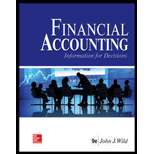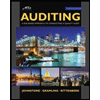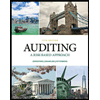
1.
Introduction:Cash and cash equivalent in a
To determine:The term cash equivalent and liquid assets
2.
Introduction: Cash and cash equivalent in a balance sheet means the assets which can be easily convertible into cash when desired. Cash equivalents include marketable securities or bank accounts which can be converted into readily cash. Example for cash equivalents are treasury bills issued by government, commercial paper, etc.
To determine:The reason for investment in idle cash in cash equivalent by the companies.
3.
Introduction: Cash and cash equivalent in a balance sheet means the assets which can be easily convertible into cash when desired. Cash equivalents include marketable securities or bank accounts which can be converted into readily cash. Example for cash equivalents are treasury bills issued by government, commercial paper, etc.
To Identify:The five principal of effective cash management.
Want to see the full answer?
Check out a sample textbook solution
Chapter 6 Solutions
Loose Leaf for Financial Accounting: Information for Decisions
- General Accountingarrow_forwardHardy Technologies reports that at an activity level of 6,800 machine-hours in a month, its total variable inspection cost is $320,000 and its total fixed inspection cost is $150,000. What would be the average fixed inspection cost per unit at an activity level of 7,100 machine-hours in a month? Assume that this level of activity is within the relevant range. (a) $21.13 (b) $23.50 (c) $20.00 (d) $19.45arrow_forwardAccurate answerarrow_forward
- Meridian Manufacturing is a division of a global corporation. Data concerning the most recent year appears below: Sales: $24,800,000 Net operating income: $1,984,000 Average operating assets: $6,200,000 The division's turnover is closest to: A. 3.25 B. 4.00 C. 0.31 D. 5.12arrow_forwardWhat is the variable overhead rate variance for the month?arrow_forwardWhat is the amount of Stockholders' equity at the end of the year on these financial accounting question?arrow_forward
 Auditing: A Risk Based-Approach to Conducting a Q...AccountingISBN:9781305080577Author:Karla M Johnstone, Audrey A. Gramling, Larry E. RittenbergPublisher:South-Western College Pub
Auditing: A Risk Based-Approach to Conducting a Q...AccountingISBN:9781305080577Author:Karla M Johnstone, Audrey A. Gramling, Larry E. RittenbergPublisher:South-Western College Pub Auditing: A Risk Based-Approach (MindTap Course L...AccountingISBN:9781337619455Author:Karla M Johnstone, Audrey A. Gramling, Larry E. RittenbergPublisher:Cengage Learning
Auditing: A Risk Based-Approach (MindTap Course L...AccountingISBN:9781337619455Author:Karla M Johnstone, Audrey A. Gramling, Larry E. RittenbergPublisher:Cengage Learning Intermediate Accounting: Reporting And AnalysisAccountingISBN:9781337788281Author:James M. Wahlen, Jefferson P. Jones, Donald PagachPublisher:Cengage Learning
Intermediate Accounting: Reporting And AnalysisAccountingISBN:9781337788281Author:James M. Wahlen, Jefferson P. Jones, Donald PagachPublisher:Cengage Learning Intermediate Financial Management (MindTap Course...FinanceISBN:9781337395083Author:Eugene F. Brigham, Phillip R. DavesPublisher:Cengage Learning
Intermediate Financial Management (MindTap Course...FinanceISBN:9781337395083Author:Eugene F. Brigham, Phillip R. DavesPublisher:Cengage Learning EBK CONTEMPORARY FINANCIAL MANAGEMENTFinanceISBN:9781337514835Author:MOYERPublisher:CENGAGE LEARNING - CONSIGNMENT
EBK CONTEMPORARY FINANCIAL MANAGEMENTFinanceISBN:9781337514835Author:MOYERPublisher:CENGAGE LEARNING - CONSIGNMENT





